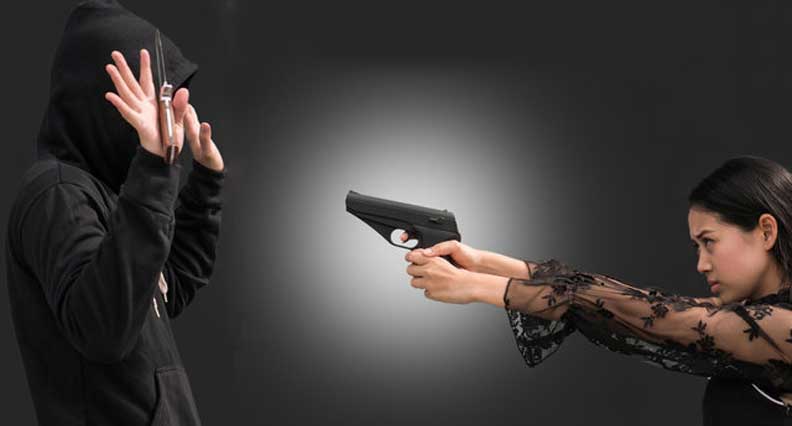
free shipping on orders over $49
We're having a 15% off sale on all our products. Enter your email below to be notified about future sales.




I have touched on the judicious use of force and the use of force continuum in previous posts. But this topic warrants a full article on its own. I am not a lawyer, but this will be a basic primer if you are not well-versed in it. Your best option would be to follow up with an in-person class. Many local shooting ranges offer standalone use-of-force classes or contain that training in other firearms courses.
In today’s society, it is more important than ever for civilians to be aware of their rights and responsibilities when it comes to the use of force. The use of force continuum is a model that can help civilians make informed decisions about when and how to use force in self-defense.
The use of force continuum is a graduated scale that ranges from verbal commands to deadly force. The level of force that is appropriate in a given situation will depend on several factors. These include the severity of the threat, the size and strength of the attacker, and the availability of other options.
Presence is the first tier of the use of force continuum. Usually, this is referred to as officer presence. This is where the mere sight of a police officer may de-escalate a situation. In a civilian encounter, this is making eye contact and displaying an alert posture. You are making sure the person knows you see them and are not going to be taken by surprise. No verbal communication is used at this point.
Communication or verbal commands are the least amount of force that should be used. Verbal commands should be used to try to de-escalate the situation and to give the attacker a chance to surrender. If the attacker does not comply with verbal commands, then more force may be necessary.
Empty-hand techniques are physical techniques that do not involve the use of weapons. These techniques can be used to restrain an attacker or to protect yourself from harm. Empty-hand techniques should only be used if you are confident that you can use them safely and effectively. This tier is broken down into 2 levels:
Non-lethal Weapons can be used in self-defense if you believe that you are in imminent danger of serious bodily injury. When using a self-defense weapon, it is important to use the minimum amount of force necessary to stop the threat. This tier involves the use of items such as pepper spray, stun guns, or telescopic steel batons.
Deadly force should only be used as a last resort. Deadly force is any force that is likely to cause death or serious bodily injury. Deadly force should only be used if you believe that you or someone else is in imminent danger of death or serious bodily injury. The use of knives or firearms is considered deadly force.
It is important to remember that the use of force continuum is a guide, not a rule. The level of force that is appropriate in a given situation will depend on the specific facts and circumstances. If you are ever in a situation where you feel the need to use force, you should do whatever you think is necessary to protect yourself and others. But remember, unyielding use of non-lethal self-defense weapons could turn into deadly force.
Disparity of force is a legal term that refers to the difference in size, strength, or weapons between an attacker and a victim. In the context of self-defense, disparity of force can be used to argue that a victim was justified in using more force than would otherwise be considered reasonable.
For example, if a small woman is attacked by a large man, she may be justified in using a weapon to defend herself. This would be the case even if she would not be justified in using the same weapon to defend herself against a smaller attacker.
The concept of disparity of force is based on the idea that a person has the right to use whatever force is necessary to defend themselves from harm. This right is not absolute, however, and the amount of force that is considered reasonable will vary depending on the specific facts and circumstances of each case.
In general, it’s accepted that women have been more successful with this defense than men. But courts will consider the following factors when determining whether a victim was justified in using force in self-defense:
If a court finds that a victim was justified in using force in self-defense, the victim will not be held liable for any injuries that they inflict on the attacker.
It is important to note that the concept of disparity of force is not a get-out-of-jail-free card for using excessive force. Still, if a victim uses more force than is reasonably necessary to defend themselves, they may still be held liable for any injuries that they inflict on the attacker.S
Here are some tips for using the Use of Force Continuum effectively:
The use of force is a serious matter. By understanding the use of force continuum and by using it effectively, you can help to protect yourself and others from harm. Be safe, and be prepared.
Black Belt Defender
1867 Caravan Trail #105
Jacksonville, FL 32216-2006
Call us toll-free: (800) 859-5566
Mon-Fri: 9:00 am – 5:00 pm EST
NH based, FL Warehouse
Online Orders: 24/7/365

